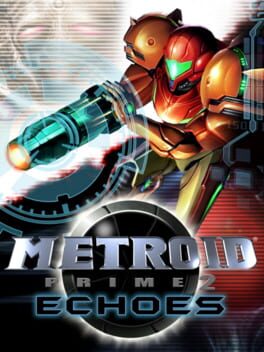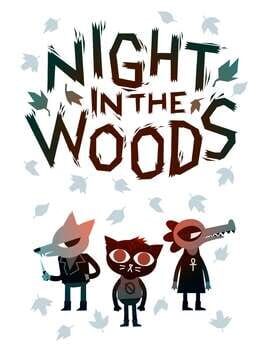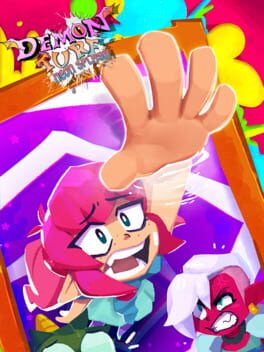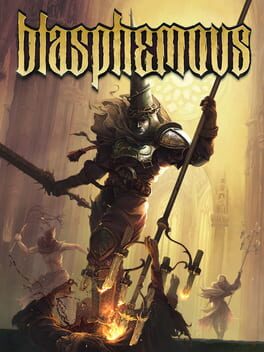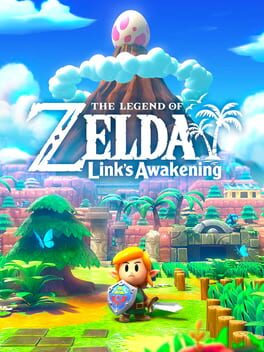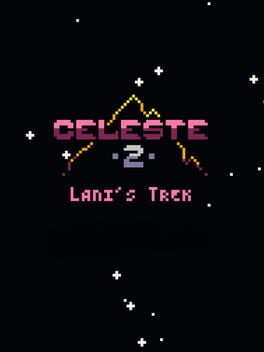maximilyun
Metroid Prime 2: Echoes is a worthwhile sequel to the original Metroid Prime. It’s great in all aspects. But in all aspects, there’s always something holding it back.
The level design benefits from an “open-zone” approach. Its an element I never minded from the original Metroid Prime, but the lack of backtracking in Echoes allows each main area to linearly build tension - whereas at its worst, Prime 1 could feel meandering rather than awe-some. Each area is more complex, not only in how you solve puzzles and traverse them, but also in the fact that we have a parallel “Dark Aether” to traverse, with its own unique challenges, mostly based on traversal (physical and dimensional). This is all quite good, but I think leaning into this structure would have benefited the game. The open-zones are great. Like I said, they build tension and awe moreso than the original Prime did. In nearly all three main areas, I had to leave midway through my excursion. I found that I’d get halfway through an area, get stuck, then the hint system would guide me to an upgrade in the Temple Grounds hub area. In the latter two of three areas, this happened, and the hint system is not nearly quick enough to activate. I would have much rather had the game send me on a hunt for this upgrade in order to unlock the area’s they’re first used in, so I hadn’t made progress, only to be whisked away from an area’s self-contained narrative. I like these new areas for how invested you get in them, but Echoes takes you out of that experience when you really start to get going.
As for the story, it starts with a lot of intrigue, and throughout, it’s a great motivator to explore the world. It is very repetitive, though. The Space Pirate and Luminoth Warrior Logs are well-written, but they failed to capture the same kind of awe I had for Tallon IV in this game’s predecessor. A war between forces of light and darkness, a world caught in “transdimensional flux” - that’s cool! I’d be quicker to forgive how quickly the Space Pirates get written off if the Ing were explored more. How I see it, For the latter two-thirds of Echoes, the Space Pirates are radio silent, which I think was done to show how the Ing are a big threat. I like this idea, but I think the Ing aren’t explored enough, and their presence is too dull. They can certainly be threatening though, even if most of their physical appearances are through the posession and mutation of other enemies. They’re very similar to Phazon in that regard - which I think is by design, they seem related to or made from the substance. Ultimately, I just wish the narrative had better payoff, because it sets up an intriguing mystery, and lots of different parties in the conflict. Its contemplative tone is similar to Prime 1 however, which I think is to its detriment. I’m shown great potential, but left disappointed by these aspects by the end of the game, which is never good.
The combat is unique! It controls similarly to its predecessor, but this time I found it spellbindingly clunky. The moments where its clunkyness is most obvious are the main area boss fights, but those moments are also the game’s most intricate mechanically and cinematic. The new enemies make good use of Samus’ abilities; the different takes on resource management made me play a little more cautiously; and overall I’d say has very little sore-spots. My beloved scan visor got a facelift I didn’t know it needed until now, it’s so much more convenient to use. The enemies don’t require these beams and visors as much as the first Prime did, and while I love the first Prime’s combat, I certainly didn’t mind this new approach - especially when there’s still plenty incentive to switch your mode of combat.
Overall, I liked Metroid Prime 2: Echoes, a lot. More than things that take me out of the experience, things that fail to get me invested in the first place are what hurt it the most. I wanted more moments like every appearance of Dark Samus; I wanted to see Space Pirates get decked in real time; I wanted to see the Ing as a bigger threat than I did; I wanted a more active story. The commonalities between Metroid Prime and Metroid Prime 2, are where Metroid Prime 2 fails. It experiments with the Metroid Prime formula, but I think it needed to stray further away from it than it did, to truly stand out as a riveting, unforgettable experience. As it stands though, I had a lot of fun with its increasingly complex environments, and encounters.
The level design benefits from an “open-zone” approach. Its an element I never minded from the original Metroid Prime, but the lack of backtracking in Echoes allows each main area to linearly build tension - whereas at its worst, Prime 1 could feel meandering rather than awe-some. Each area is more complex, not only in how you solve puzzles and traverse them, but also in the fact that we have a parallel “Dark Aether” to traverse, with its own unique challenges, mostly based on traversal (physical and dimensional). This is all quite good, but I think leaning into this structure would have benefited the game. The open-zones are great. Like I said, they build tension and awe moreso than the original Prime did. In nearly all three main areas, I had to leave midway through my excursion. I found that I’d get halfway through an area, get stuck, then the hint system would guide me to an upgrade in the Temple Grounds hub area. In the latter two of three areas, this happened, and the hint system is not nearly quick enough to activate. I would have much rather had the game send me on a hunt for this upgrade in order to unlock the area’s they’re first used in, so I hadn’t made progress, only to be whisked away from an area’s self-contained narrative. I like these new areas for how invested you get in them, but Echoes takes you out of that experience when you really start to get going.
As for the story, it starts with a lot of intrigue, and throughout, it’s a great motivator to explore the world. It is very repetitive, though. The Space Pirate and Luminoth Warrior Logs are well-written, but they failed to capture the same kind of awe I had for Tallon IV in this game’s predecessor. A war between forces of light and darkness, a world caught in “transdimensional flux” - that’s cool! I’d be quicker to forgive how quickly the Space Pirates get written off if the Ing were explored more. How I see it, For the latter two-thirds of Echoes, the Space Pirates are radio silent, which I think was done to show how the Ing are a big threat. I like this idea, but I think the Ing aren’t explored enough, and their presence is too dull. They can certainly be threatening though, even if most of their physical appearances are through the posession and mutation of other enemies. They’re very similar to Phazon in that regard - which I think is by design, they seem related to or made from the substance. Ultimately, I just wish the narrative had better payoff, because it sets up an intriguing mystery, and lots of different parties in the conflict. Its contemplative tone is similar to Prime 1 however, which I think is to its detriment. I’m shown great potential, but left disappointed by these aspects by the end of the game, which is never good.
The combat is unique! It controls similarly to its predecessor, but this time I found it spellbindingly clunky. The moments where its clunkyness is most obvious are the main area boss fights, but those moments are also the game’s most intricate mechanically and cinematic. The new enemies make good use of Samus’ abilities; the different takes on resource management made me play a little more cautiously; and overall I’d say has very little sore-spots. My beloved scan visor got a facelift I didn’t know it needed until now, it’s so much more convenient to use. The enemies don’t require these beams and visors as much as the first Prime did, and while I love the first Prime’s combat, I certainly didn’t mind this new approach - especially when there’s still plenty incentive to switch your mode of combat.
Overall, I liked Metroid Prime 2: Echoes, a lot. More than things that take me out of the experience, things that fail to get me invested in the first place are what hurt it the most. I wanted more moments like every appearance of Dark Samus; I wanted to see Space Pirates get decked in real time; I wanted to see the Ing as a bigger threat than I did; I wanted a more active story. The commonalities between Metroid Prime and Metroid Prime 2, are where Metroid Prime 2 fails. It experiments with the Metroid Prime formula, but I think it needed to stray further away from it than it did, to truly stand out as a riveting, unforgettable experience. As it stands though, I had a lot of fun with its increasingly complex environments, and encounters.
2017
Well, a lot of this game’s intent went over my head. I can appreciate it for what it is in hindsight, but a lot of what impresses me the most evaded me on my first playthrough.
Its themes on mental health and capitalism are apparent yet the overal message is a little abstract. I’m fine with this, but it certainly impacted my first playthrough and made the ending fall kinda flat for me. Delving deeper (thinking more about the game and reading what some people have had to say about it), I really like what Night in the Woods has to say, and how it has to say it.
By far its greatest strength is its worldbuilding, and how its world is presented.. The game looks like I’m playing a children’s story book, which fits perfectly with Mae’s idealistic, forever-young view of her life. She seems to hallucinate as the changing views of her childhood friends and dying town contrast her own immature view of things. Childhood friends, who have matured more than Mae in her 2 years off to college, are navigating their feelings through their disparate, desperate situations. Greg can’t goof off as he wants to move to the big city with his boyfriend and Bea’s responsibilities continue to pile as her depressed father grows older. Possum Springs can no longer live up to its legacy as a mining town and opportunities are scarce.
It isn’t all bleak in Possum Springs, there are plenty of things to do and keep track of. Night in the Woods controls well enough and animates fluidly enough for a mechanically and tactilely fun game, despite its simple loop. There’s also enough varied content you can explore to find and miss out on day by day. I find that Mae’s gameplay of platforming across a makeshift jungle gym of telephone poles and rooftops; talking and listening to people; maybe partaking in some activity they’re doing, is fun! Specifically, jumping around the town like its a playground, with its storybook art-style, makes for a fascinating atmosphere, reflecting and adding to our understanding of Mae’s plight.
And yeah, perhaps some of the finer details went over my head, but Night in the Woods has a phenomenal atmosphere, one that is felt in its story, regardless of how deep you dive. Where its more abstract ideas fall by the wayside is towards the end of the game, which seems understated - and is! But this understated ending sat better in my mind with time. And certain moments that I felt led nowhere, I now see the point of.
Overall, I had a good time with Night in the Woods. I appreciate both its smaller moments and broad strokes. Its use of capitalism and religion in metaphors is a real strong point, even if I couldn’t immediately see what it was going for. And in hindsight, through a little bit of digging (I am not the smartest), I really do love how its themes come together in the end.
Its themes on mental health and capitalism are apparent yet the overal message is a little abstract. I’m fine with this, but it certainly impacted my first playthrough and made the ending fall kinda flat for me. Delving deeper (thinking more about the game and reading what some people have had to say about it), I really like what Night in the Woods has to say, and how it has to say it.
By far its greatest strength is its worldbuilding, and how its world is presented.. The game looks like I’m playing a children’s story book, which fits perfectly with Mae’s idealistic, forever-young view of her life. She seems to hallucinate as the changing views of her childhood friends and dying town contrast her own immature view of things. Childhood friends, who have matured more than Mae in her 2 years off to college, are navigating their feelings through their disparate, desperate situations. Greg can’t goof off as he wants to move to the big city with his boyfriend and Bea’s responsibilities continue to pile as her depressed father grows older. Possum Springs can no longer live up to its legacy as a mining town and opportunities are scarce.
It isn’t all bleak in Possum Springs, there are plenty of things to do and keep track of. Night in the Woods controls well enough and animates fluidly enough for a mechanically and tactilely fun game, despite its simple loop. There’s also enough varied content you can explore to find and miss out on day by day. I find that Mae’s gameplay of platforming across a makeshift jungle gym of telephone poles and rooftops; talking and listening to people; maybe partaking in some activity they’re doing, is fun! Specifically, jumping around the town like its a playground, with its storybook art-style, makes for a fascinating atmosphere, reflecting and adding to our understanding of Mae’s plight.
And yeah, perhaps some of the finer details went over my head, but Night in the Woods has a phenomenal atmosphere, one that is felt in its story, regardless of how deep you dive. Where its more abstract ideas fall by the wayside is towards the end of the game, which seems understated - and is! But this understated ending sat better in my mind with time. And certain moments that I felt led nowhere, I now see the point of.
Overall, I had a good time with Night in the Woods. I appreciate both its smaller moments and broad strokes. Its use of capitalism and religion in metaphors is a real strong point, even if I couldn’t immediately see what it was going for. And in hindsight, through a little bit of digging (I am not the smartest), I really do love how its themes come together in the end.
2021
If Demon Turf could commit to one idea it’d be all the better for it. Each decision made about this game’s structure has to account for the myriad of styles it goes for. I’d like it a lot more if if it leaned entirely into being a linear puzzle-platformer, or an open-zone collectathon. I cannot meet it on its own terms since I’m not exactly certain what those terms are. The boundless variety in structure and theme just gives me a headache. Platforming setpieces and minigames aren’t THAT bad on their own, but together, they form a chimeric whole, completely shooting down any sense of pacing or rising action the game could’ve had.
Hub worlds, placeable checkpoints that you teleport between, and minigames, all feel suited to a more open-ended kind of level. Unfortunately, the little good these mechanics provide is taken away by how poorly the mesh with the game’s structure. So many levels are linear obstacle courses that can’t build upon the previous level’s ideas since there is usually never a previous level. Each level’s structure is also muddied by having you complete some random minigame or activity. A lot of the levels feel like a linear gauntlet of some of Super Mario Odyssey’s most worthless power moon challenges, with some platforming sprinkled in.
None of these gimmicks and abilities are terrible conceptually. However, when each turf jerks you from the “enter buildings” level to the “open” level to the “linear” level back to the “enter buildings” level; when these levels have as much fluff as they do platforming gauntlets; when the game asks so little of you - I struggle to find any reason to care.
Neither the story nor the presentation grabbed me, though these facets both have their fun moments. Ugly and boring at their worst, nice at their best!
Inconsistency and structural issues haunt every corner of this game. Its uniqueness can’t make up for all of its issues and I’m left with a bad taste in my mouth by the end of it - even with its cute ending. I think with an overhaul in structure, and a few mechanical tweaks, Demon Turf could be a lot better.
Hub worlds, placeable checkpoints that you teleport between, and minigames, all feel suited to a more open-ended kind of level. Unfortunately, the little good these mechanics provide is taken away by how poorly the mesh with the game’s structure. So many levels are linear obstacle courses that can’t build upon the previous level’s ideas since there is usually never a previous level. Each level’s structure is also muddied by having you complete some random minigame or activity. A lot of the levels feel like a linear gauntlet of some of Super Mario Odyssey’s most worthless power moon challenges, with some platforming sprinkled in.
None of these gimmicks and abilities are terrible conceptually. However, when each turf jerks you from the “enter buildings” level to the “open” level to the “linear” level back to the “enter buildings” level; when these levels have as much fluff as they do platforming gauntlets; when the game asks so little of you - I struggle to find any reason to care.
Neither the story nor the presentation grabbed me, though these facets both have their fun moments. Ugly and boring at their worst, nice at their best!
Inconsistency and structural issues haunt every corner of this game. Its uniqueness can’t make up for all of its issues and I’m left with a bad taste in my mouth by the end of it - even with its cute ending. I think with an overhaul in structure, and a few mechanical tweaks, Demon Turf could be a lot better.
Neon Splash improves massively upon the original Demon Turf’s structure, and while a few unique quirks from the original fall to the wayside, this is a more rewarding, complete experience. Only the best parts of Beebz’s moveset and the levels she’d navigate are brought to Neon Splash. And while your options for movement can lead to rote paths through each level, there are enough windows for creative expression and sequence breaking that are really fun.
Collectibles are still an issue, often slowing down the pace to crawl if you choose to go for them. And when the speedrun clock, and the amount of lollipops you’ve collected, are given the same real estate in the UI, this sends some mixed messages. I think these collectibles would fare better if the game didn’t track how many you collect or how many are in each level, and if their placements were more closely tied to the main path, maybe tempting players to take a harder route through a segment.
While this game does suffer from some of the same issues as Demon Turf, notably with collectibles and a rigid movement system, steps were taken to improve the flaws of its predecessor, and Neon Splash is a huge improvement on every front because of it, ESPECIALLY structurally. Great rebound!
Collectibles are still an issue, often slowing down the pace to crawl if you choose to go for them. And when the speedrun clock, and the amount of lollipops you’ve collected, are given the same real estate in the UI, this sends some mixed messages. I think these collectibles would fare better if the game didn’t track how many you collect or how many are in each level, and if their placements were more closely tied to the main path, maybe tempting players to take a harder route through a segment.
While this game does suffer from some of the same issues as Demon Turf, notably with collectibles and a rigid movement system, steps were taken to improve the flaws of its predecessor, and Neon Splash is a huge improvement on every front because of it, ESPECIALLY structurally. Great rebound!
2019
Blasphemous is a gorgeous game. Its interconnected world is conveyed wonderfully. The abstract, isometric fast-travel map can be effortlessly read after uncovering most of the major areas - which really speaks to how well Blasphemous acquaints you with its many landmarks through engaging gameplay. Many areas are designed in such a way where you’re introduced to a few new elements, and those elements are iterated upon in later screens - usually incorporating some other elements and enemies from earlier areas, which can interact with the new stuff in cool ways. The shockwaves of a certain enemy causes you to fall from the wooden boards you stick your sword into; scythes swing as a grotesque beast and army of golden dolls slowly chip away at you - there’s a very excellent “complexity-curve” in most areas. Combat in general is woven through these areas in such a great way - at first my expectations made me play this game as though it was Hollow Knight, but I later realized how to properly fight enemies, and its environments became increasingly complex tests of awareness, planning, and timing - with the later screens of each area being excellent tests of what you’ve learned. It’s also impressive how each new area ramps up the challenge, each foreign setting feels like a war of attrition until the very end, and once you’ve thrown down some ladders of opened up some shortcuts in the area, they become easier to trek through - rewarding!!! The fantastic design of many of these areas are often lost on me whenever I have to make multiple treks through them, however.
There’s virtually zero things that change about your movement, and if you’re inclined to trek through some of these areas upwards of three times, it really wears on you. And you will be inclined - lots of interesting-looking areas and crevices are blocked off by some arbitrary requirement and it sucked being gated from them for so long. Blasphemous’ metroidvania structure often works to its detriment in this regard. I think if it were to lean into a more linear, challenge-based design, where its side-content is less upgrade-reliant, or the upgrades required for side-content were less obtuse to find, it’d be all the better for it. In my playthrough, I spent several hours combing the map to find a single upgrade that allowed me to explore more. Its lack of direction makes mentally mapping the world a rewarding experience, but lot of its side-content is highly frustrating to seek out. I don’t think this is a necessary concession to make - I think there could have been a better middle-ground. Instead, around the halfway point, these problems rear their head as the map balloons in size, certain unreachable areas from hours ago continue to taunt you knowing you’ve missed something crucial. My ideal Blasphemous “level” is structured similarly to its own Graveyard of the Peaks, Jondo, or Mourning and Havoc, linear affairs that test your awareness and combat. I just wish it was easier to figure things out on my own. I was still in awe from Blasphemous’ surprising second half, even if its increased breadth detracted just a bit from what I enjoyed so much from the earlier hours.
Part of why I enjoyed this second-half so much, and part of why I like this game in the first place, is its setting. So many locations and characters are LITERALLY stunning, I mean like, stunning, I had to stop and just look at them. Grotesque and painful imagery; gory and impactful animations; and some ginormous, colourful setpieces - all make Blasphemous stand out. Many areas are as emotionally potent as they are mechanically. The game is not at all afraid to show you an interesting character or vista or mechanic and then move on without ever bringing them back, a decision I love. Although boss fights lean the most into this kind of emotional, gross imagery, they suffer in my mind from often being large. Too often does a fight in this game feel unlike a fight, and more like a bullet-hell minigame, which works for other games and their tones, but not here I think. Though, these boss fights are absolutely not bad, some are among my favourite fights in the game, I just tend to prefer the more duel-like fights, of which there are still plenty. Plenty of fights are a great test of skill as well, I love fights that feel like fights.
Guilt-ridden imagery twists around every part of Blasphemous. While I’d be a fool to try and explain the nuances of these themes, there’s plenty of opportunity to dive into its greater lore through some item descriptions, which I found cumbersome to read as I kept acquiring more over time, but occasional looking at the descriptions of my more personal mementos gave me some wonder. It also provides a lot of interesting mythology, each area of the early game does a good job of setting expectations for the end-of-area boss fight. Blasphemous has a really consistent theme of “guilt,” which weaves itself through each major arc of the narrative. Its story is not easily understood, but its easily felt, if that makes sense.
Overall, Blasphemous is a game I’m amazed more than I’m frustrated with, and while I think I see clear area for improvement, I’m glad to have finally seen it through its entirety.
There’s virtually zero things that change about your movement, and if you’re inclined to trek through some of these areas upwards of three times, it really wears on you. And you will be inclined - lots of interesting-looking areas and crevices are blocked off by some arbitrary requirement and it sucked being gated from them for so long. Blasphemous’ metroidvania structure often works to its detriment in this regard. I think if it were to lean into a more linear, challenge-based design, where its side-content is less upgrade-reliant, or the upgrades required for side-content were less obtuse to find, it’d be all the better for it. In my playthrough, I spent several hours combing the map to find a single upgrade that allowed me to explore more. Its lack of direction makes mentally mapping the world a rewarding experience, but lot of its side-content is highly frustrating to seek out. I don’t think this is a necessary concession to make - I think there could have been a better middle-ground. Instead, around the halfway point, these problems rear their head as the map balloons in size, certain unreachable areas from hours ago continue to taunt you knowing you’ve missed something crucial. My ideal Blasphemous “level” is structured similarly to its own Graveyard of the Peaks, Jondo, or Mourning and Havoc, linear affairs that test your awareness and combat. I just wish it was easier to figure things out on my own. I was still in awe from Blasphemous’ surprising second half, even if its increased breadth detracted just a bit from what I enjoyed so much from the earlier hours.
Part of why I enjoyed this second-half so much, and part of why I like this game in the first place, is its setting. So many locations and characters are LITERALLY stunning, I mean like, stunning, I had to stop and just look at them. Grotesque and painful imagery; gory and impactful animations; and some ginormous, colourful setpieces - all make Blasphemous stand out. Many areas are as emotionally potent as they are mechanically. The game is not at all afraid to show you an interesting character or vista or mechanic and then move on without ever bringing them back, a decision I love. Although boss fights lean the most into this kind of emotional, gross imagery, they suffer in my mind from often being large. Too often does a fight in this game feel unlike a fight, and more like a bullet-hell minigame, which works for other games and their tones, but not here I think. Though, these boss fights are absolutely not bad, some are among my favourite fights in the game, I just tend to prefer the more duel-like fights, of which there are still plenty. Plenty of fights are a great test of skill as well, I love fights that feel like fights.
Guilt-ridden imagery twists around every part of Blasphemous. While I’d be a fool to try and explain the nuances of these themes, there’s plenty of opportunity to dive into its greater lore through some item descriptions, which I found cumbersome to read as I kept acquiring more over time, but occasional looking at the descriptions of my more personal mementos gave me some wonder. It also provides a lot of interesting mythology, each area of the early game does a good job of setting expectations for the end-of-area boss fight. Blasphemous has a really consistent theme of “guilt,” which weaves itself through each major arc of the narrative. Its story is not easily understood, but its easily felt, if that makes sense.
Overall, Blasphemous is a game I’m amazed more than I’m frustrated with, and while I think I see clear area for improvement, I’m glad to have finally seen it through its entirety.
While there are some quirks lost in translation, the remake of Link's Awakening is a perfectly fine way to experience the original. The streamlined item management and seamless overworld go a long way to make this a more brisk experience - which could be worse depending on who you ask! Its remade visuals may not be for everyone, but I think they fit the surreal vibe of the game quite nicely, even if I think they could have went weirder with them. By far this game's biggest flaw is the shaky framerate and constantly flickering lighting.
Perhaps for me, who has beaten Link's Awakening DX multiple times, it was an experience that, at times, made me homesick. And I think many people who have played this game first, would feel the same way if they jumped ship to the Gameboy original.
Perhaps for me, who has beaten Link's Awakening DX multiple times, it was an experience that, at times, made me homesick. And I think many people who have played this game first, would feel the same way if they jumped ship to the Gameboy original.
Metroid: Zero Mission’s status as a remake is something I’ve had to grapple with - does it succeed as a reimagining of the concept and atmosphere of the original Metroid? No, but that’s hardly the point. It’s a pretty big overhaul of the original NES game. Some might say it’s too big an overhaul, but I think it should have gone further. Before the game proper even begins, Samus herself frames the next several hours of gameplay as her telling the tale of “my first battle here… My so-called Zero Mission.” It’s the perfect opportunity to create an action-packed, guns-blazing, greatest-hits version of the first Metroid. The game seems to play into this at many points, it’s relatively cinematic, and very linear in the critical path. The game, unfortunately, rarely capitalizes on this concept, only really delivering on being a greatest-hits.
Zero Mission, with all its changes, still shares the same windy-world of its origin game, and I think that’s a problem. This hardly feels like, well, anything! Samus’ journey feels more like a chore, or a guided tour, than it does a dramatic retelling of Metroid. I like the ending sequence quite a bit, but was often frustrated by it. I think this is a direct result of the rest of the game feeling so inconsequential in comparison. I don’t think every area needed to live up to the atmosphere and scope of this sequence, they did need to be designed in such a way that contributes to this focus on action and movement. Like I said, this reimagining should have gone further!
Maybe it was a tall order to expect both a drastic overhaul in mechanics AND entirely new map design. This is a compromise that will allow newcomers to the Metroid series to get a feel on its unique sensibilities, and tour some of its most iconic locations. That being said, it’s a compromise that didn’t do much for me. It ends up a weird union of Super Metroid’s large, interconnected world; Fusion’s linearity and tight controls - but with none of the strengths those games have. Zero Mission is fun game to play at times, but feels lacking in identity and impact.
Zero Mission, with all its changes, still shares the same windy-world of its origin game, and I think that’s a problem. This hardly feels like, well, anything! Samus’ journey feels more like a chore, or a guided tour, than it does a dramatic retelling of Metroid. I like the ending sequence quite a bit, but was often frustrated by it. I think this is a direct result of the rest of the game feeling so inconsequential in comparison. I don’t think every area needed to live up to the atmosphere and scope of this sequence, they did need to be designed in such a way that contributes to this focus on action and movement. Like I said, this reimagining should have gone further!
Maybe it was a tall order to expect both a drastic overhaul in mechanics AND entirely new map design. This is a compromise that will allow newcomers to the Metroid series to get a feel on its unique sensibilities, and tour some of its most iconic locations. That being said, it’s a compromise that didn’t do much for me. It ends up a weird union of Super Metroid’s large, interconnected world; Fusion’s linearity and tight controls - but with none of the strengths those games have. Zero Mission is fun game to play at times, but feels lacking in identity and impact.
